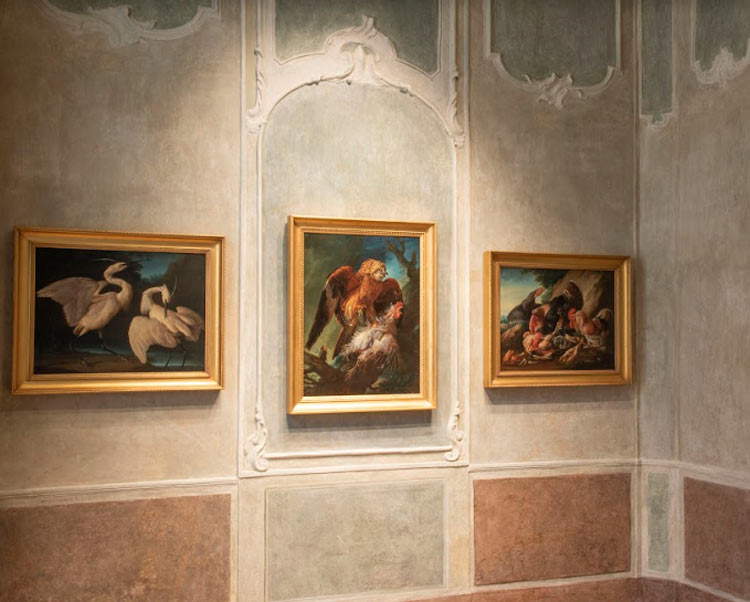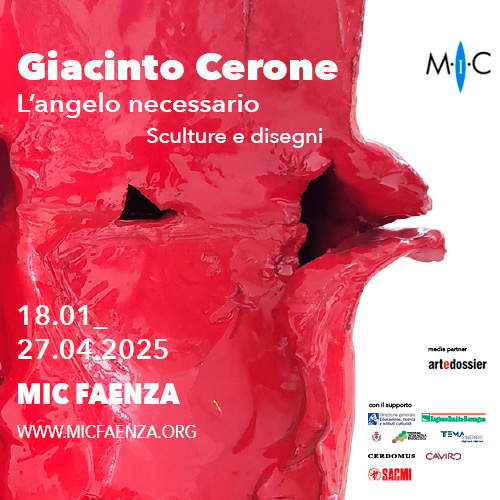Brescia, at the Pinacoteca Tosio Martinengo new display of the 1700s and new acquisitions
A new layout for the Tosio Martinengo Picture Gallery in Brescia. Four years after the museum’s reopening, the Lombard institute inaugurates the new itinerary, curated by Roberta D’Adda, coordinator of the collections and research area of Fondazione Brescia Musei, with the collaboration of the foundation’s scientific committee and dedicated to the 18th century. The project involves seven rooms and enriches the Pinacoteca’s spaces with new color choices.
The itinerary gives the public a way to take a journey into the Age of Enlightenment, enriched with works by Eberhard Keilhau known as Monsù Bernardo (1624 - 1687), Antonio Cifrondi (1656 - 1730), a follower of Pietro Bellotti, Giacomo Francesco Cipper known as Todeschini (1664 - 1736) and Giacomo Ceruti known as Pitocchetto (1698 - 1767), along with the most characteristic genres present in the Pinacoteca: the inclusion in the exhibition itinerary of four additional paintings from the Brescian civic collections the “nature vive” of Giorgio Duranti (1683 - 1768) until now kept in storage, to the “pygmy paintings” of Faustino Bocchi. Thanks to the arrival of a homogeneous nucleus of works, it was therefore possible to rethink an entire section. “The story of eighteenth-century pictorial culture through the works of the Pinacoteca,” says Roberta D’Adda, “is enriched with a new chapter: a multi-voiced reading of the meanings and forms that subjects of popular themes took on during a century capable of combining, in the art of Giacomo Ceruti, misery and nobility.”
The Pinacoteca also counts on new acquisitions: it is eleven new works (from the legacy of Domenico Galantino, from the BPER Banca deposit, from the donation of Clara Bottarelli and from Pierangelo Gramignola, collector and patron), allow a new room to be dedicated to Giacomo Ceruti, investigating more in depth his work between portraits and genre scenes and, in parallel, to develop a discourse around the different meanings and forms that popular subjects took on during the 18th century, involving fundamental artists and references in the sphere of Lombard and northern Italian painting: from Pietro Bellotti to Monsù Bernardo, from Cifrondi to Cipper, all the way to very peculiar subgenres such as Giorgio Duranti’s “live natures” and Faustino Bocchi’s “pygmy paintings.”
Giacomo Ceruti’s “new” works, the Bravo (ca. 1725), Portrait of Marquise Laura Vitali Aliprandi, Portrait of Marquis Don Erasmo Aliprandi (ca. 1740) and Mother with Child (1730), besides enriching what has always been the most important corpus, in the world, of works by the Milanese artist by birth and Brescian by adoption, sanction the nature and quality of Ceruti as a great painter of portraits, capable of achieving astonishing results in the mimetic rendering of figures, as well as genre subjects for which he is known. This expansion of the collection, which has allowed the dedication of a new room to the painter, represents a further step of approach and in-depth study, in favor of the artist, that will lead to the major exhibition curated by Roberta D’Adda, Francesco Frangi and Alessandro Morandotti, scheduled for February 2023, the year in which Brescia with Bergamo will be Capital of Culture.
More generally, the new acquisitions offer, especially for the 18th-century section, an even greater broadening of vision to the already many important examples, present in the Tosio Martinengo collection, of those “painters of reality” (according to Roberto Longhi’s 1953 definition) who, with Moretto, Moroni, Lotto and Savoldo, influenced the formation of the young Caravaggio, and then continued with Monsù Bernardo and Pietro Bellotti, then with Cifrondi, Todeschini up to Ceruti. Authors, again for Longhi, of “portraits of ordinary and unhappy men, without comment, but as great as the real thing” to whom is restored the leading role in the European artistic panorama of the eighteenth century. A manner that of Lombard painting rich in cultured references, coming from and closely related to northern Europe, which was certainly also an inspiration for artists of later generations, such as the 19th-century realism of Courbet, who saw in these artists the first modern approach to the themes of reality.
 The new display of the
The new display of the The new display of the eighteenth century at the
The new display of the eighteenth century at the The new display of the eighteenth century at the Pinacoteca
The new display of the eighteenth century at the Pinacoteca
The statements
“The setting up of the new rooms of the eighteenth century in Pinacoteca Tosio Martinengo,” says Francesca Bazoli, president of Fondazione Brescia Musei, “is a plastic example of the results to which collaboration between a cultural institution that cuts across the various civic constituencies and the most motivated and enlightened parts of the community, understood as private individuals and companies, can lead. Clara Bottarelli’s donations in memory of Pierangelo Gramignola and the deposit agreements with Banca BPER have allowed us, with additional works in bequest or on deposit, the recovery and restoration of other civic works, to further enrich an itinerary of the Pinacoteca, that of the 1700s, thus contributing to increase the size of the exhibition proposal and at the same time to work from a cultural point of view on a period that will be the subject of the great exhibition dedicated to Giacomo Ceruti in 2023. We can rightly count this new exhibit among the best practices of a civic collaboration, a worthy representation of the inclusive and participatory approach to public good and its management under the leadership of Fondazione Brescia Musei.”
“The decision to donate paintings, which my husband and I loved so much and which have accompanied us during the years we lived together,” explains donor Clara Bottarelli Gramignola, “is a way to remember the passion toward Brescian art that has always distinguished Pierangelo Gramignola, and a gift toward the entire citizenry, so that beauty can be admired by all in the city’s House of the Arts.”
“La Galleria di BPER Banca,” stresses Sabrina Bianchi, head of Brand and Marketing Communication and La Galleria di BPER Banca, “manages and promotes BPER Banca’s valuable corporate collection, composed of important territorial nuclei. The Brescian nucleus is of particular importance and the loan agreement, defined with Fondazione Brescia Musei, gives us the opportunity to make available to the public three paintings by Giacomo Ceruti from our collection, canvases that will be included in the renewed exhibition itinerary of Pinacoteca Tosio Martinengo where their history and quality will be enhanced. Enhancing, preserving and making usable the artistic heritage are fundamental objectives of La Galleria di BPER Banca, and interweaving collaborations such as the one started with Fondazione Brescia Musei allows us to contribute to spreading a culture that is alive and open to all.”
“For BPER Banca,” says Maurizio Veggio, territorial director of Lombardy East - Triveneto BPER Banca, “the promotion of culture, as a key to social enrichment, is a fundamental piece among the activities supporting the territories in which it operates. Brescia is a city that is attentive and in ferment from a cultural point of view, ready to host the program planned for 2023, the year that will see us as protagonists together with Bergamo in the Italian Capital of Culture project. Lending Fondazione Brescia Musei works that have been part of our collection for years gratifies us and above all allows the general public to be able to appreciate masterpieces that would otherwise remain visible only to a small number of people.”
 |
| Brescia, at the Pinacoteca Tosio Martinengo new display of the 1700s and new acquisitions |
Warning: the translation into English of the original Italian article was created using automatic tools. We undertake to review all articles, but we do not guarantee the total absence of inaccuracies in the translation due to the program. You can find the original by clicking on the ITA button. If you find any mistake,please contact us.





























